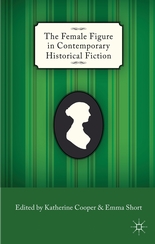
I joined in a conversation with Alice Thompson for a new publication launched last month edited by Katherine Cooper and Emma Short. Here is a short extract from the book about my own approach to writing historical fiction.
I never find it easy to begin writing and am capable of great inventiveness when it comes to displacement activities. The rest of life, emails, even housework, can all seem more urgent and compelling than confronting that opening blank screen. I suspect this fear is more acute for the women of my generation than it is for the men. In my own case this period of not-writing can go on for a worryingly long time. What catapults me out of it is clearing a space in which the only task I give myself is writing, coupled with the realisation that unless I do so the material gathering in my head will evaporate forever.
I always scribble my first draft as quickly as possible. I don’t care where I start and I also don’t worry if some parts of it come out in note form rather than fully fledged sentences. I think of myself as an explorer: I’m writing to familiarise myself with my characters and discover their stories. Trying to polish phrases as I go is therefore pointless, and slows the process down. In her novel To the Lighthouse, Virginia Woolf shows the artist Lily Briscoe struggling with a voice in her head which insists ‘women can’t paint’. Speed can be a powerful weapon against these internal censors. At this stage I give myself unlimited freedom and use research only for inspiration, seldom to check facts.
Once this first draft is done, I put it away for a while before reading it through. Usually it is so rough I don’t even bother correcting it. Instead I draw up a list of what feels alive. My overriding concern is to discover and preserve what the piece is so I can set about writing it. Inevitably, much is pruned. Sometimes I list the elements I now know will comprise my narrative and think about how to order them. This outline can only be provisional because every act of writing introduces new directions and ideas. An important outcome of this first draft is that it will have helped me uncover the ‘voice’ of the piece. With Vanessa and Virginia I allowed myself to be inspired by Woolf’s shimmering, richly allusive prose, but in the novel I’ve just finished the idiom is very different, sparser and more conversational.
Now I have most of the elements I need I can start writing. Although technically this is my second version it still feels like my first, because I open a new document and only occasionally refer back to my original draft. During this stage, I am thinking about the shape and mood of the whole as well as my characters, the way words fall on the page as well as the story. It requires courage and discipline to keep going. I find having deadlines helpful even though they need continual adjustment.
Once this draft is done I am euphoric. Like Lily Briscoe as she finishes her picture, I have the sense some conundrum or tension I was only half aware of has resolved itself. The feeling is short-lived because the reworking that follows is every bit as demanding. I always show a piece to at least one reader before I edit. It reminds me what I have written is no longer my personal affair but must survive the close scrutiny of others. Although I permit myself a great deal of freedom in the early, exploratory stages of writing historical fiction, I am conscious during the editing that I cut or amend anything I know from my research to be beyond the realms of the possible. With Vanessa and Virginia, I removed all but the most minimal alterations to the historical record, and only retained imagined scenarios I felt I could, if required, defend as at the very least highly plausible. This reverence for the past surprises me: it’s not true of all historical novelists, and I never feel constrained in this way if I’m writing a contemporary piece.
Images help me write, and though I work in a tiny office I am surrounded by visual aids. My novel at the moment is set in Paris so I have photographs and pictures of the city up on my walls. [….]

If at all possible, once I have started on a creative piece I write every day. I live with musicians and try to emulate their schedule of regular practice. Writing is like a muscle which gains in strength and flexibility the more it is used. The best way to feed the writing muscle is by incessant reading.
For further details of The Female Figure in Contemporary Historical Fiction, edited by Katherine Cooper and Emma Short, click here

Comments 1
It’s a fascinating process and far more complex and layered than many people would believe until they have tried! This is really interesting to read Susan.